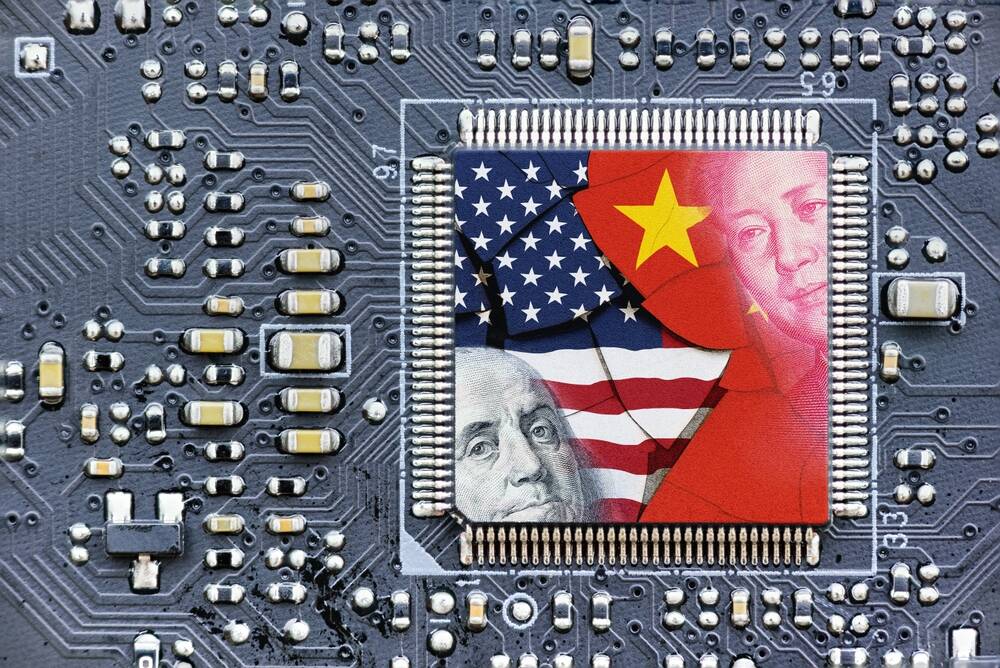How Did China Get So Good At Chips And AI? Congressional Investigation Blames American Venture Capitalists

The US has gone to great lengths to stifle China's fledgling semiconductor industry and deprive it of the tools to develop AI models. Yet a newly published congressional report has found that American venture capital firms are at least partially responsible for funding the Middle Kingdom's explosive growth in these arenas.
The House Select Committee on the China Communist Party (CCP) investigation revealed Thursday that five VC funds – GGV Capital, GSR Ventures, Qualcomm Ventures, Sequoia Capital, and Walden International – were responsible for injecting billions of dollars into Chinese AI and semiconductor businesses tied to human rights abuses and the People's Liberation Army (PLA).
"The United States has invested enormous time, resources, and government effort to prevent the transfer of sensitive US technology to the People's Republic of China (PRC). But US venture capital flows have undercut these efforts by funding and providing intangible support to the very same companies that export controls and other regulations are intended to isolate," the report reads.
Of these investments, the investigation found that more than $1.9 billion of funding went to AI companies – like Megvii, Intellifusion, SenseTime, DeepGlint, and Yitu – which have been backlisted by the US government for their support of the Chinese surveillance state and/or human rights violations against the Uyghurs.
Meanwhile, the committee claimed at least $1.2 billion in funding was provided to 150 semiconductor companies. In particular, the report highlighted Walden's early support of Semiconductor Manufacturing International Co. (SMIC), which is China's leading producer of high-end semiconductors today.
According to the report, the committee tied Walden to $125 million of investments in SMIC and affiliated companies like SJSemi and Galaxy Core.
However, it's not just the flow of US funds that has the committee bent out of shape. The committee also called out the VCs for "intangible" contributions – including consulting, talent acquisition, and market opportunities.
In one example highlighted in the report, the committee singled out Walden International chairman Lip-Bu Tan, who previously served as the CEO of Cadence Design Systems. Cadence develops electronic design automation software which Chinese corporates, like Huawei, are actively trying to replicate.
The committee alleges that Tan and other partners at Walden coordinated business opportunities and provided subject-matter expertise while holding board seats at SMIC and Advanced Micro-Fabrication Equipment Co. (AMEC).
The report's focus on artificial intelligence and semiconductor investments was largely motivated by US attempts to cut off China from these technologies. These efforts include restricting the export of US-developed chip technologies, pressuring allies to do the same, barring the sale of most AI accelerators in China, and a prohibition on US investments in Chinese technologies with potential military applications.
That latter point, the committee notes, drove many VC funds to split off their Chinese divisions in order to comply with the executive order. While they noted this was a step in the right direction, the committee emphasized that it remains to be seen whether these measures will stop the flow of American money into China.
"Such splits may insulate some types of capital flows from regulatory scrutiny," the report warned.
- Volt Typhoon not the only Chinese crew lurking in US energy, critical networks
- AI models just love escalating conflict to all-out nuclear war
- Uncle Sam designates more Chinese tech slingers as military collaborators
- China 'readies production' of homegrown high-bandwidth memory
But while the committee was able to link American VC funding to Chinese AI and semiconductor concerns, it's worth noting that these investments were made prior to Biden's executive order barring them, and thus were perfectly legal at the time.
In fact, Sequoia defended its investments in the report, telling the committee that they "coincided with expressed government policies and public positions in the US that encouraged business to invest in the region."
Further complicating the matter is that because VC capital tends to be invested early in a startup's development, future infractions – including the indirect support of human rights abuses or the Chinese army apparatus – are hard to predict.
While the committee acknowledged this limitation, it made the case that China's policy of military-civil fusion means that, if a technology has military applications, the PLA will eventually seek to use it to their advantage.
"Because of the extent of the control over the PRC's private sector, it is necessary to implement sectoral investment controls to prevent US capital from flowing to entities that support the PLA or the PRC's domestic repression or genocide," the report argues.
To address this, the committee is calling on the US to codify the current executive order prohibiting US investment in critical and emerging technologies in China. This legislation, they contend, should be expanded to include companies and institutions found on the variety of US blacklists. ®
From Chip War To Cloud War: The Next Frontier In Global Tech Competition
The global chip war, characterized by intense competition among nations and corporations for supremacy in semiconductor ... Read more
The High Stakes Of Tech Regulation: Security Risks And Market Dynamics
The influence of tech giants in the global economy continues to grow, raising crucial questions about how to balance sec... Read more
The Tyranny Of Instagram Interiors: Why It's Time To Break Free From Algorithm-Driven Aesthetics
Instagram has become a dominant force in shaping interior design trends, offering a seemingly endless stream of inspirat... Read more
The Data Crunch In AI: Strategies For Sustainability
Exploring solutions to the imminent exhaustion of internet data for AI training.As the artificial intelligence (AI) indu... Read more
Google Abandons Four-Year Effort To Remove Cookies From Chrome Browser
After four years of dedicated effort, Google has decided to abandon its plan to remove third-party cookies from its Chro... Read more
LinkedIn Embraces AI And Gamification To Drive User Engagement And Revenue
In an effort to tackle slowing revenue growth and enhance user engagement, LinkedIn is turning to artificial intelligenc... Read more

